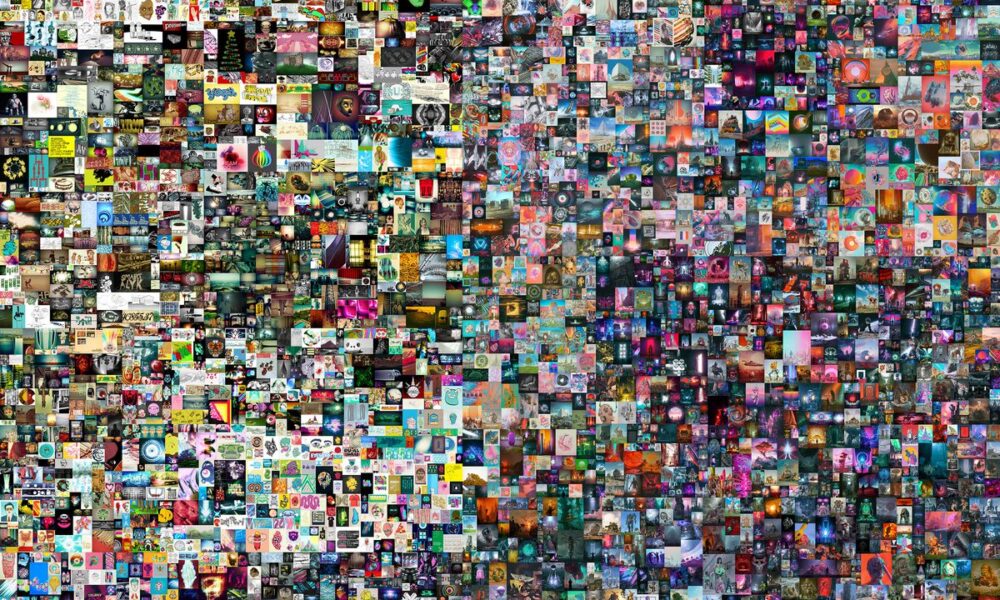Non-fungible tokens (NFTs) are the new year’s craziest phenomenon and strangest mystery. Following in the footsteps of Bitcoin and other cryptocurrency investments, these tokenized digital commodities have taken the internet by storm. NFTs allow collectors to own original pieces of artwork in the digital form. What started as a way for artists to sell the rights to their work has evolved into a bustling marketplace for status symbols and Twitter profile pictures. The question remains: Are NFTs the next evolution of art dealerships or nothing more than a passing collection craze?
An object or asset is fungible if its owner can trade it for another object of equal value, such as money or Air Miles. Both physical and digital assets can be fungible. In art markets, collectors buy and sell paintings, sculptures, and other artifacts, but do not exchange or trade them. Art is therefore non-fungible; NFTs bring this phenomenon onto the internet. An NFT is a digital “token,” or object, that can only be purchased with cryptocurrency. Whereas bitcoin or other forms of crypto are fungible, NFTs are publicly verifiable assets authenticated on the blockchain. When an NFT is designated as a token on the blockchain, it can be sold like a tangible piece of artwork. In other words, NFTs are the digital public ledger of cryptocurrency. What sets NFTs apart from other forms of digital art ownership or copyright is the tokenization of each asset. This helps prevent fraud by publicly publishing the ownership of these commodities.
On the one hand, NFTs allow artists to profit from the sales of one-of-a-kind digital works, including paintings, videos, and music—much like painters do with physical pieces. However, tech millionaires, hip-hop artists, and other celebrities have latched onto NFTs as the newest way to gaudily display their wealth. For example, popular digital artist Bored Ape Yacht Club has garnered over $1 billion in sales since its May 2021 launch, selling unique cartoons of apes valued as high as $3.4 million. Although some artists treat NFTs as another way to financially thrive off of selling their creations, others do very little in the way of fostering creativity, favouring profit. NFTs differ from other art purchasing sites, such as Etsy, in that the buyer doesn’t just own a copy of the digital art, but the rights to that particular digital image. Many NFTs posted to digital marketplaces like OpenSea are frauds, simply screen captures of an image with no accompanying proof of ownership. Social media users and celebrities alike have flocked to Bored Ape Yacht Club, displaying their NFTs as social media profile pictures. Recently, Twitter began a pilot program allowing users to upload not just a photo, but the verified copy of an NFT to set as their profile picture on Twitter, which will appear as a hexagonal icon to indicate its authenticity. Instead of having the owner of an entity simply screengrab the image of the digital token and upload it to their profile, they would be able to upload the token onto Twitter and prove their ownership of the NFT.
Theoretically, NFTs seem like a fair way to give artists the privilege to distribute content online in a profitable, trustworthy way. However, due to the common lack of originality and authenticity in the art, as well as the abrupt spike in interest, NFTs resemble more of a fad rather than industry-altering technology. Relying solely on consumer-generated excitement and often lacking the depth or complexity that grants artistic works their timelessness, NFTs possess little long-term value. Instead, they offer the possibility of exorbitantly displaying wealth as one would with streetwear or excessive jewelry—only online. At the end of the day, many NFT sales are less about art quality and more about brand names and showing off one’s money.










Pingback: Logan Paul’s genius strategies to make you rich! - The McGill Tribune